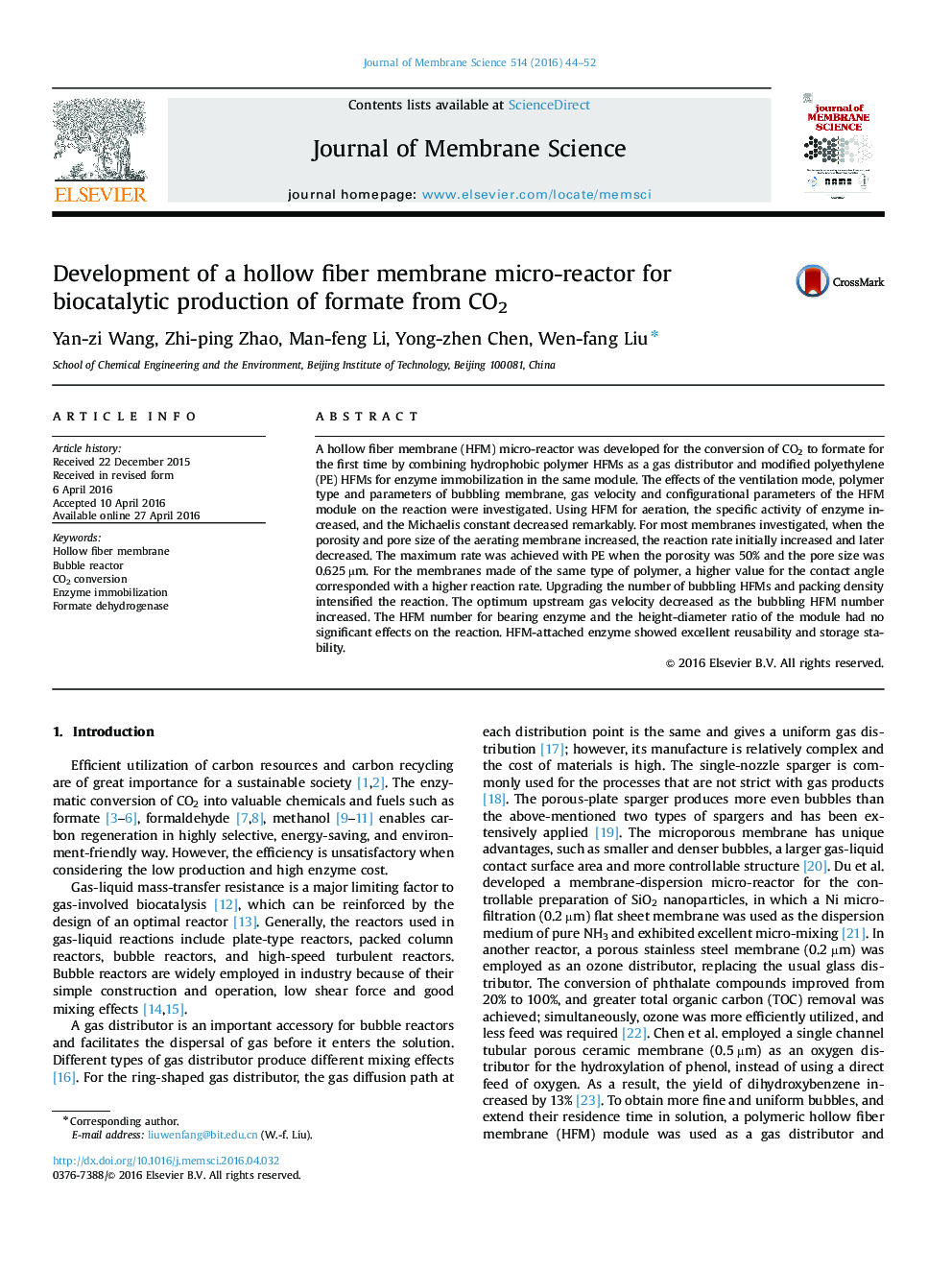| Article ID | Journal | Published Year | Pages | File Type |
|---|---|---|---|---|
| 632259 | Journal of Membrane Science | 2016 | 9 Pages |
•A HFM micro-reactor was developed firstly for the conversion of CO2 to formate.•Using HFM for aeration, the specific activity and the affinity of FDH increased.•The porosity and contact angle of bubbling membrane greatly impacted the reaction.•Increasing bubbling HFMs number and packing density accelerated the reaction.•HFM-attached FDH exhibited excellent reusability and storage stability.
A hollow fiber membrane (HFM) micro-reactor was developed for the conversion of CO2 to formate for the first time by combining hydrophobic polymer HFMs as a gas distributor and modified polyethylene (PE) HFMs for enzyme immobilization in the same module. The effects of the ventilation mode, polymer type and parameters of bubbling membrane, gas velocity and configurational parameters of the HFM module on the reaction were investigated. Using HFM for aeration, the specific activity of enzyme increased, and the Michaelis constant decreased remarkably. For most membranes investigated, when the porosity and pore size of the aerating membrane increased, the reaction rate initially increased and later decreased. The maximum rate was achieved with PE when the porosity was 50% and the pore size was 0.625 µm. For the membranes made of the same type of polymer, a higher value for the contact angle corresponded with a higher reaction rate. Upgrading the number of bubbling HFMs and packing density intensified the reaction. The optimum upstream gas velocity decreased as the bubbling HFM number increased. The HFM number for bearing enzyme and the height-diameter ratio of the module had no significant effects on the reaction. HFM-attached enzyme showed excellent reusability and storage stability.
Graphical abstractFigure optionsDownload full-size imageDownload high-quality image (276 K)Download as PowerPoint slide
